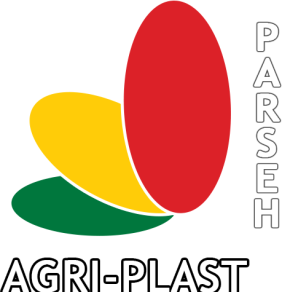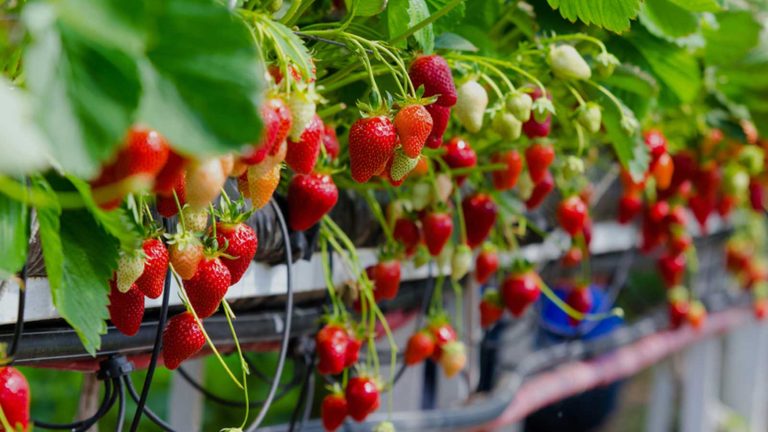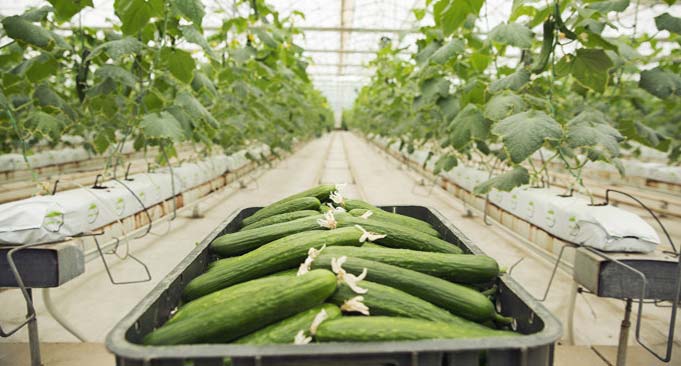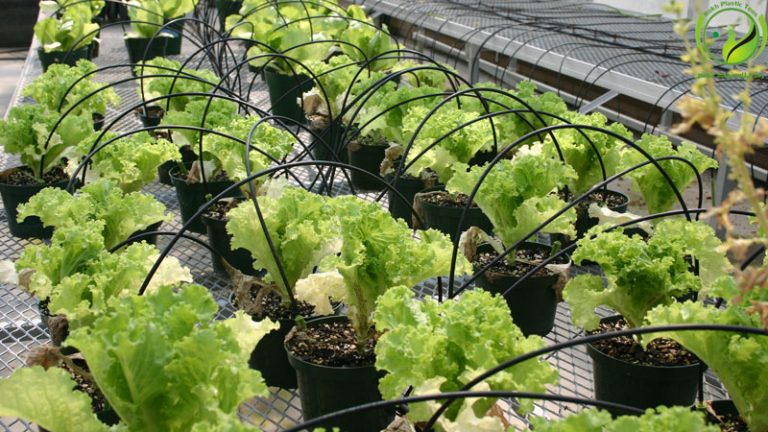
وبلاگ
Which greenhouse products are very profitable?

Choosing the right product for growing in the greenhouse requires careful consideration of various factors. Below are the important steps and tips to know about greenhouse crops:
1.Market analysis
First of all, it is necessary to identify the needs of the market. Examining the demand for different products, their prices and competitors in your area can help you make the best decision. Using market research tools and consumer surveys can provide detailed information about their desires and needs.
2.Weather conditions
Different crops need specific conditions to grow. Among the key parameters, we can mention temperature, humidity, light and soil type. If your greenhouse is located in an area with variable temperatures, it is better to go for products that are resistant to temperature changes. Also, it is important to pay attention to the time of planting and harvesting.
3.Water resources
Water is one of the vital factors in agriculture. If you live in a water-scarce area, choosing products that require less water is very important. Plants such as lettuce, basil and aloe vera are suitable options in this field.
4.Cost management
Investigating the initial and current costs of growing a product is also very important. These costs include the cost of seeds, fertilizers, irrigation and maintenance. For example, if you want to choose crops with a low initial cost and a quick return on investment, fast-growing vegetables are good options.
5.Cultivation diversity
Diversification in growing different crops can help you avoid market fluctuations. Cultivation of different crops such as vegetables, fruits and ornamental plants can reduce the risks caused by the drop in the price of a particular product.
6.Attention to resistant species
Selection of species resistant to diseases and pests is also of great importance. Hardy products usually require less maintenance, thus reducing production costs. In this regard, researching resistant cultivars and choosing quality seeds can help you succeed.
7.Use of new technologies
New technologies in agriculture can help you produce better products. The use of smart irrigation systems, environmental sensors and artificial lighting can help increase the quality and quantity of products.
Do we have such a thing as "best greenhouse crops"?
In fact, no single product can be known as "the best". This means that the best product for each greenhouse depends on several conditions that we will mention below:
1.Local conditions
The best product for you depends on your local conditions. For example, if you live in an area with a hot, dry climate, crops such as cactus or drought-tolerant herbs can be good options. In contrast, in regions with humid and temperate climates, crops such as tomatoes and strawberries may be the best choice.
2.market need
Market needs are effective in product selection. The best product for you may change based on consumer demand in your area. For example, in some regions, the demand for organic vegetables has increased, which can be a great opportunity to grow these crops.
3.Economic analysis
Economic analysis and costs related to the production of products are also influential in choosing the best product. Products that have a higher profit margin and require lower costs for cultivation and maintenance can be the best choices. Thus, a crop may be economically viable for one farmer, but not for another.
4.Personal taste and experience
Your experience in growing different crops can also be effective in choosing the best crop. If you have successful experience growing a particular crop, you may want to consider it as your best option.
5.Seasonal changes
The best product may change according to different seasons. For example, some crops perform best in the spring and others in the fall. Therefore, knowing the growing and harvesting seasons to choose the best product is of particular importance.
6.Attention to innovations and new trends
New trends in agriculture, such as horizontal or vertical cultivation, can provide new options for producing new and profitable crops. For example, cultivation of medicinal plants or ornamental flowers in greenhouses are known as profitable crops due to high demand.
What are low watering greenhouse plants?
In the current situation where the lack of water resources is one of the major challenges of agriculture, choosing plants resistant to lack of irrigation can help preserve resources and increase productivity. Below we introduce some low-irrigation greenhouse plants:
1.Aloe Vera
Aloe vera is a medicinal plant with many properties that requires less water. This plant grows well in dry and low water conditions and can be planted as an economic crop in greenhouses. Aloe vera has a suitable market due to its therapeutic properties and use in various industries, including health and cosmetics.
2.cacti
Cacti are very popular as ornamental plants and require little water. These plants are well adapted to harsh environmental conditions and are easily grown in greenhouses. The high variety of cacti can add to the attractiveness of the market and create more sales opportunities.
3.Basil
Basil is a plant that needs relatively little light and water and grows quickly. In addition to being used in various foods, this plant is also known as an ornamental plant. Considering the high market demand for aromatic plants, basil can be an excellent option for greenhouse cultivation.
4.Green tea (Camellia sinensis)
Green tea is another low water plant that can be grown well in greenhouses. This plant grows in suitable conditions and enables the production of quality leaves for making tea. The demand for green tea is increasing in the global market, which can be a good opportunity for farmers.
5.apricot
Apricot is another low water crop that can be grown in greenhouses. This fruit is noted for its pleasant taste and high nutritional properties, and despite the need for care and special conditions, it can be recognized as a profitable product.
6.Medicinal plants
Many medicinal plants such as sage, mint and marjoram require less water and grow well in greenhouses. In addition to their medicinal properties, these plants are suitable options for farmers due to their good market and reasonable prices.
7.bell pepper
Bell pepper is a drought-resistant plant that grows well in greenhouse conditions. This plant is in high demand in the market due to its variety of colors and flavors and can be recognized as a profitable product.
The amount of profit from the greenhouse depends on what factors?
The profitability of a greenhouse depends on several factors, which are mentioned below:
1.Type of crops grown
The type of crops grown has a direct effect on the amount of profit. Some products, such as organic fruits and vegetables, are more profitable due to higher demand and higher prices. Also, choosing seasonal and popular products can also help increase income.
2.Greenhouse management
Optimum greenhouse management includes meeting environmental needs such as temperature, humidity, light, and plant nutrition. Proper management can help increase the quality and quantity of products and thus improve profitability. Also, using new technologies in greenhouse management can reduce costs and increase productivity.
3.Sales market
Access to sales markets and appropriate pricing for products is one of the key factors in profitability. If the products are sold at higher prices, the profit margin will increase. Also, knowing the needs of customers and effective marketing also helps to sell more.
4.Production costs
Production costs, including seed, fertilizer, water, and labor, have a large impact on profit. Reducing costs by using sustainable farming techniques and optimizing production processes can help increase profits.
5.The season of planting and harvesting
The season of planting and harvesting crops can also affect the amount of profit. Some products have higher prices in certain seasons of the year. Therefore, proper timing for planting and harvesting crops can help increase profits.
6.Attention to innovations
The use of new innovations and technologies such as smart irrigation systems, temperature and humidity sensors, and modern cultivation methods can help increase the quality and quantity of crops and thus increase profitability.
7.Research and development
Investing in research and development to identify and introduce new crops and improve cultivation methods can allow farmers to remain competitive in the market and earn more profits.
8.Weather conditions
The weather conditions of the region are also one of the important factors in the amount of production and quality of products. Suitable weather can help plants grow better and thus lead to increased profits. Farmers should be familiar with the climatic conditions of their region and choose suitable products.
All kinds of greenhouse products
1.Strawberries
Strawberry is one of the popular and delicious fruits that is welcomed all over the world because of its sweet taste and high nutritional properties.
- Features:
Light needs: Strawberries need plenty of sunlight and perform best in warm, bright conditions.
Growing time: This fruit usually bears fruit between 4 and 6 weeks after planting.
Advantages:
High price: Strawberries are usually highly profitable due to high demand and quick harvest.
Cultivation in all seasons: Using a greenhouse, this fruit can be harvested in all seasons of the year.
Cultivation tips:
Soil: Strawberries need light and rich soils.
Irrigation: Regular watering and maintaining soil moisture is very important.
2.tomato
Tomato is one of the most important and widely consumed vegetables around the world and it is cultivated in different varieties.
- Features:
Light requirements: Tomatoes need at least 6 to 8 hours of light per day.
Growing Time: It usually takes 70-90 days to grow from seed to fruit.
Advantages:
Wide market: Tomatoes are used in many foods and food industries.
Variety of types: This product is available in different types (cherry tomatoes, red tomatoes, etc.), each of which has its own market.
Cultivation tips:
Irrigation: the need for regular watering and regulation of soil moisture.
Fertilization: using suitable fertilizers to enhance the growth and quality of fruits.
3.bell pepper
Bell pepper is another popular vegetable that comes in a variety of colors (red, yellow, green) and is in high demand due to its good taste and various uses in cooking.
- Features:
Light requirements: Bell peppers need at least 6 to 8 hours of light per day.
Growing time: Bell peppers usually take 70 to 90 days from planting to harvesting.
Advantages:
Nutritional properties: rich in vitamins and minerals, especially vitamin C.
Variety of cultivation: ability to cultivate in different periods of the year and different weather conditions.
Cultivation tips:
Soil: The need for rich soil with good drainage.
Irrigation: Adjust irrigation based on plant needs and growth stage.
4.Other products
In addition to strawberries, tomatoes and bell peppers, greenhouses can be suitable for growing other types of crops.
- Lettuce and vegetables:
Lettuce and vegetables like spinach and basil are fast growing plants that need little water and light. Due to the short harvest time and high demand in the market, these products are suitable options for cultivation in the greenhouse.
Fresh fruits and vegetables:
Crops such as cucumbers, eggplants and watermelons also grow well in greenhouses. These products are usually sold at good prices due to their freshness and high quality.
conclusion
Choosing the right products for growing in the greenhouse depends not only on the weather and market conditions, but also on the type of plants and their characteristics. Considering the variety of greenhouse products and the high demand for them, farmers can achieve more profitability by making the right and optimal choice. Growing plants such as strawberries, tomatoes, bell peppers and other vegetables and fruits can help generate sustainable income and business development.
Javaneh Poosh Parseh
"Joaneposh Parse" company is one of the pioneers of the greenhouse and agricultural industry in Shiraz, which started its activity with the aim of improving the quality and variety of agricultural products. As a reliable supplier in the field of greenhouse products, this company offers all kinds of greenhouse nylon, greenhouse plastic, shirink and other products needed by farmers and greenhouse owners.
The goals and mission of the company
Sustainable Development: Parse Budge believes that by using new technologies and sustainable solutions, it is possible to achieve the production of quality and environmentally friendly products.
Research and Innovation: This company is always trying to market new and improved products through research and innovation to meet the changing needs of farmers.
Customer service: Customer orientation is one of the key principles of Parse Budding. This company helps farmers to make the best use of their products by providing expert advice and after-sales services.
Products and services
Javaneh Poosh Parseh Company offers the following products and services:
Greenhouse nylon: production and supply of quality nylons for covering greenhouses, with the ability to protect plants against unfavorable weather conditions.
Greenhouse Plastics: Supplying quality plastics for greenhouse construction, which helps to maintain temperature and humidity.
Shrink: Providing shrink for packaging of agricultural products, which helps to maintain the freshness and quality of the products during transportation.
Advice and training: providing expert advice in the field of growing greenhouse crops and optimal use of new technologies.contact us
If you are also looking for more information about the products and services of Joane Posh Parse Company or have any questions in this field, you can contact us through the following information:
Contact information:
Phone: 09017606868 07137742366-9
Address: Big Industrial City of Shiraz, Sooreh Square, South Sooreh Blvd., 203 St.
Website: javanehpoosh.comconclusion
With the aim of meeting the needs of farmers and greenhouse owners, Javane Posh Parse Company offers a variety of quality products and is trying to help the growth and development of the greenhouse industry by using new innovations and technologies. For more information and advice, contact us through the mentioned communication channels.






